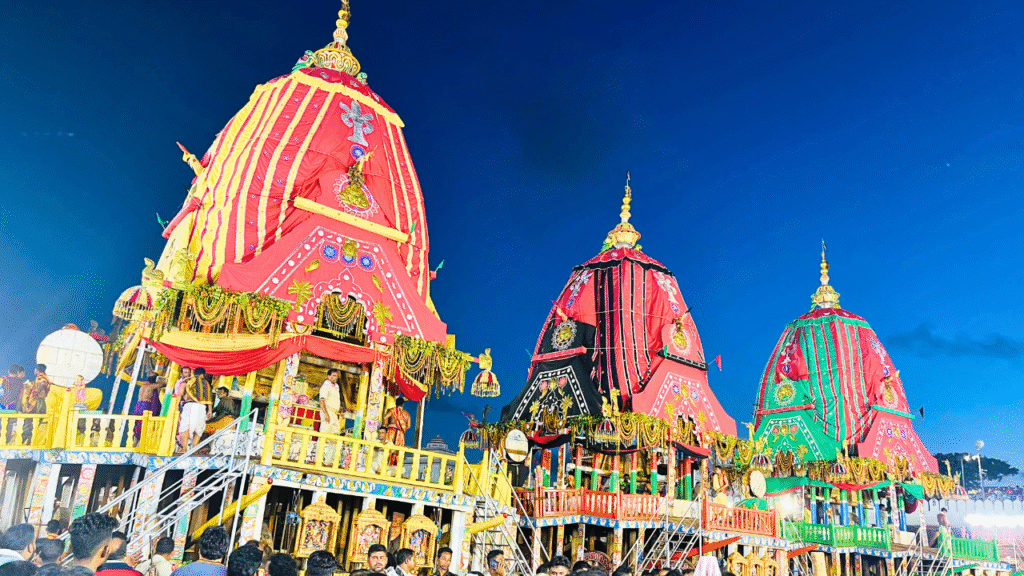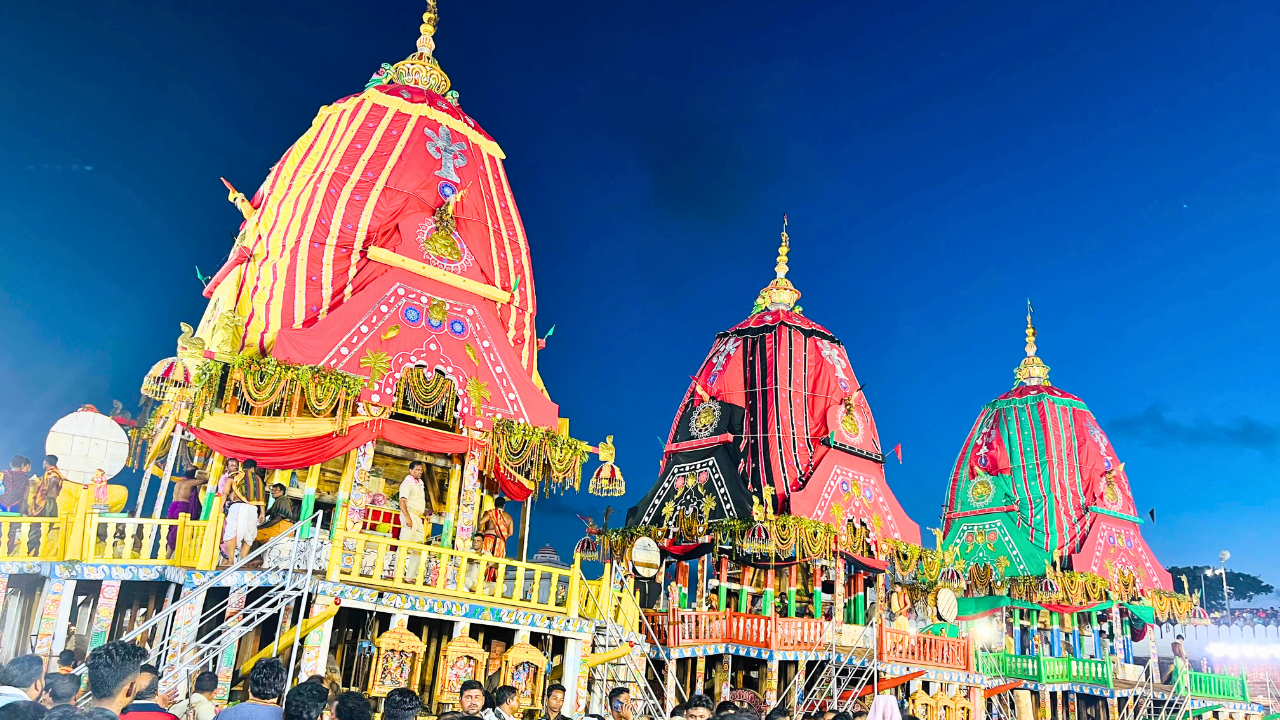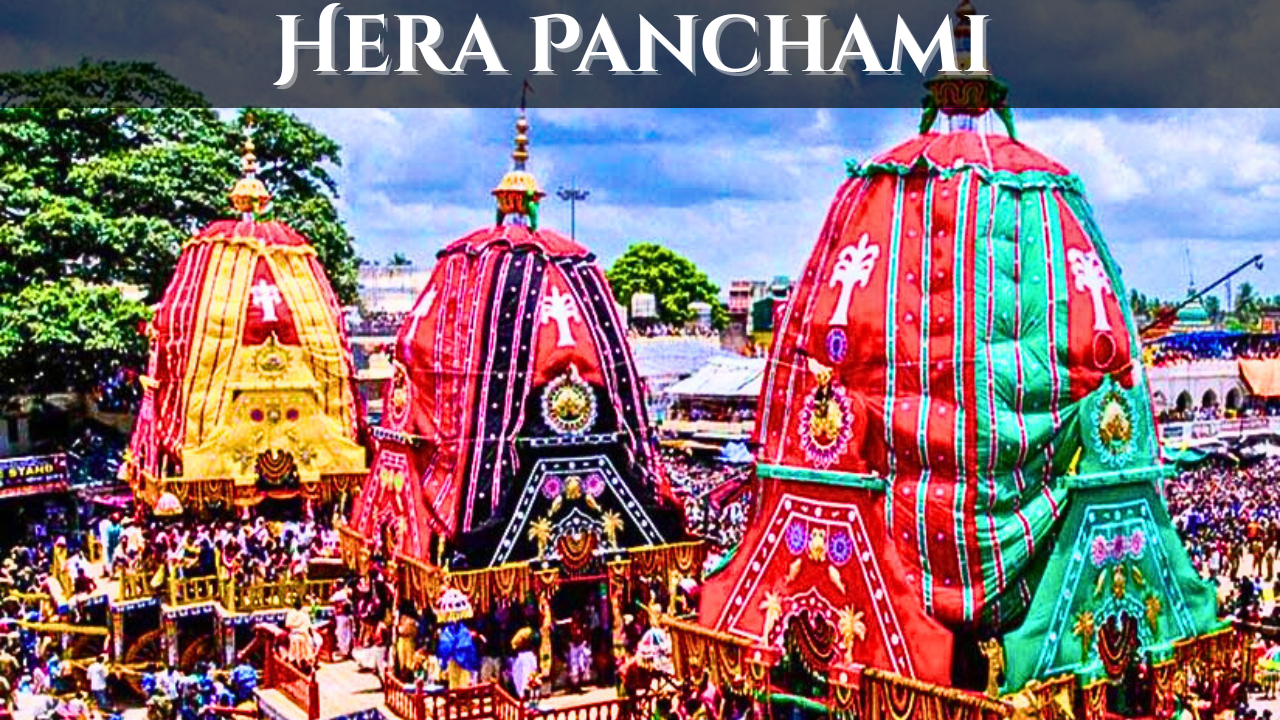The return journey which takes place on the ninth day of the Rath Yatra falls on Dashami tithi and is known as ‘Bahuda yatra‘.

It is time for Lord Jagannath, his brother Balabhadra, and sister Subhadra to return to the “Shrimandir” (Main Temple) following their seven-day sojourn in the Gundicha Temple. All three goddesses’ chariots are stationed in the temple’s “Nakachana Dwara,” facing south, in anticipation of their “Dakshina Moda,” or return trip.
Why it is called Bahuda Yatra : This return trip, known as the “Bahuda yatra,” occurs on Dashami Tithi, the ninth day of the Rath Yatra. In Odiya, “bahuda” means “return,” and the “Bahuda Pahandi,” a ceremonial procession, marks the start of the return trip at Gundicha Temple.
Without a few pauses, no yatra is complete. Mahaprabhu and his siblings make a halt at the “Mausi Maa” temple, also called the “Ma Ardhasani” temple, on this yatra. It is thought that their mother’s sister, Mausi maa, had asked them to come to her house so she could feed them. How can anybody refuse an offer from their Mausi mother, who is revered in Hinduism as Maa (mother)? The three gods visit the temple and indulge in their favorite “Podo Pitha,” a typical Odia meal prepared of coconut, rice, jaggery, and lentils, in accordance with their Mausi ma’s request. The three sibling deities resume their trek towards the Shri Mandir after briefly visiting the “Ma Ardhsani” shrine.
Why it is called Bahuda Yatra :When they return, Lord Jagannath’s chariot stops in front of the Gajapati Maharaj’s (King) palace, while Devi Subhadra and Lord Balabhadra’s chariots are parked at the “Singha Dwara” (Lion’s gate) before entering the Shrimandir.
And after a protracted and tense wait, Goddess Lakshmi finally gets to visit her Lord Jagannath here. “Lakshmi Narayana Bheta” is the name of the meeting between the two. When she learns that Lord Jagannath is coming, Goddess Lakshmi becomes agitated and eager to meet him. The servants use a palanquin to carry “Subarna Lakshmi,” a representation of the goddess, to the “Bheta Mandap” or “Chahani Mandap,” where she may view her Lord, in order to gauge and understand her mood. In Odia, “chahani” means “sight” or “glimpse,” while “mandap” means “platform.”
Additionally, she passes Lord Balabhadra’s palanquin on her way to the Bheta Mandap. According to Hindu custom, it is unlucky for the older brother to glimpse his younger brother’s wife’s face. A “parada,” or curtain, is placed in front of Lord Balabhadra’s palanquin to prevent the scenario.
When Goddess Laxmi arrives at the king’s palace, Gajapati Maharaj greets her, offers “Dahipati Manohi,” and then carries the idol on his head in the direction of Lord Jagannath to ensure their successful reunion.
Why it is called Bahuda Yatra :The heavenly pair exchange glances. With a promise of a comeback, Lord Jagannath presents the goddess with a “Agyan Mala,” or consent garland. Goddess Mahalaxmi returns to the temple after avoiding the Nandighosa, Lord Jaganath’s chariot, after receiving the mala. The “Lakshmi Narayana Bheta” is the name given to this celestial encounter between Lord Jagannath and Goddess Laxmi. Maybe this is how the Lord is letting his followers know that he is just like them.
Following the Bheta, Lord Jagannath’s chariot, the Nandighosa, continues its voyage to the Lion Gate, also known as the “Singha Dwara,” where it had stopped in front of the King’s palace. He joins his siblings who were already there.
However, the altercation was just waiting to occur. For Mahaprabhu, the goddess Mahalaxmi does not open the temple’s doors at the eastern entrance, Jay Vijaya. A conversation between the Lord of the Lords and his consort ensues. Only until Lord Jagannath acknowledges his errors and gives Devi Lakshmi “Rasagola,” among other things, does this discourse come to an end. He even feeds her, which soothes her, and she eventually nods for Mahaprabhu to enter the Shri Mandir. The big yearly ceremony comes to an end when the doors are opened and Lord Jagannath finally enters the temple.https://www.carwale.com/
next the “Bahuda Yatra,” the chariots are left parked at the entrance for up to two days while the deities are dressed in “Suna Besha,” or golden clothing, the next day. The goddesses are then brought into the main temple and set on their “Ratna Singhasan” on the “Trayadashi tithi,” a ceremony known as “Niladri Bije.”
Read More “Hera Panchami”https://utkalxpress.com/what-is-hera-panchami/



